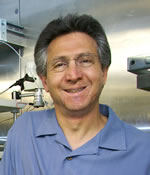BERKELEY, CA — Three researchers affiliated with the Lawrence Berkeley National Laboratory (Berkeley Lab) are among the 72 newly elected members of the National Academy of Sciences. Membership in NAS is considered one of the nation's highest honors for a scientist or engineer. Jillian Banfield, an earth scientist, Michael Marletta, a chemist, and
David Patterson, a computer scientist, are Berkeley Lab’s three newest NAS members. All three also hold faculty appointments with the University of California at Berkeley. Their election to the Academy brings the total number of Berkeley Lab NAS members to 59.
|
|
 |
 |
|
Jillian Banfield |
|
|
Banfield is a principal investigator in the Geochemistry Department of Berkeley Lab’s Earth Sciences Division, and
a UC Berkeley professor in the Department of Earth and Planetary Sciences and in the Department of Environmental Science, Policy and Management. The Australian-born researcher is an authority on interactions between microorganisms and minerals, especially the impact of microorganisms on mineral weathering and crystal growth, biomineralization, and geochemical cycling. She is also a pioneer in the new scientific field called “nanogeoscience,” which investigates geological processes that involve particles no larger than 100 nanometers, and she leads a NASA-funded astrobiology study to determine whether life ever existed on the planet Mars.
|
|
 |
 |
Michael Marletta |
|
|
|
Marletta is a principal investigator with Berkeley Lab’s Physical Biosciences Division and UC Berkeley’s Aldo DeBenedictis Distinguished Professor of Chemistry, as well as a professor of biochemistry and molecular biology. He is also a faculty affiliate with QB3, the California Institute for Quantitative Biomedical Research, and is an elected member of the prestigious Institute of Medicine. His research for Berkeley Lab has focused on structure/function relationships in proteins with a particular emphasis on the catalytic and biological properties of enzymes. His recent studies on how guanylate cyclase enzymes are able to selectively bind to nitric oxide or oxygen hold implications across a wide swatch of biology, including research into human cardiovascular diseases.
|
|
 |
 |
|
David Patterson |
|
|
Patterson is a member of Berkeley Lab’s Computational Research Division and holder of the E.H. and M.E. Pardee Chair of Computer Science at UC Berkeley. He is also a member of the National Academy of Engineering. At Berkeley, Patterson led the design and implementation of RISC I, the first VLSI Reduced Instruction Set Computer, and he shared the 2000 IEEE von Neumann medal and IEEE’s 1999 Reynold Johnson Information Storage Award. He is currently building novel microprocessors using Intelligent DRAM for use in portable multimedia devices, and is a member of the ROC project, for Recovery Oriented Computing.
The NAS was established in 1863, under President Lincoln, as a private organization of scientists and engineers dedicated to “the furtherance of science and its use for the general welfare.” The Academy acts as an official adviser to the federal government, upon request, in any matter of science or technology. Total membership of NAS now stands at 2,013.
Berkeley Lab is a U.S. Department of Energy national laboratory located in Berkeley, California. It conducts unclassified scientific research and is managed by the University of California. Visit our Website at www.lbl.gov.
Additional Information
|



